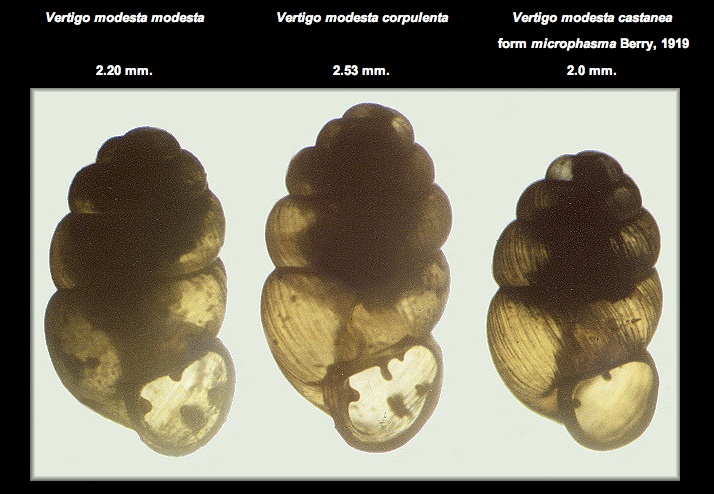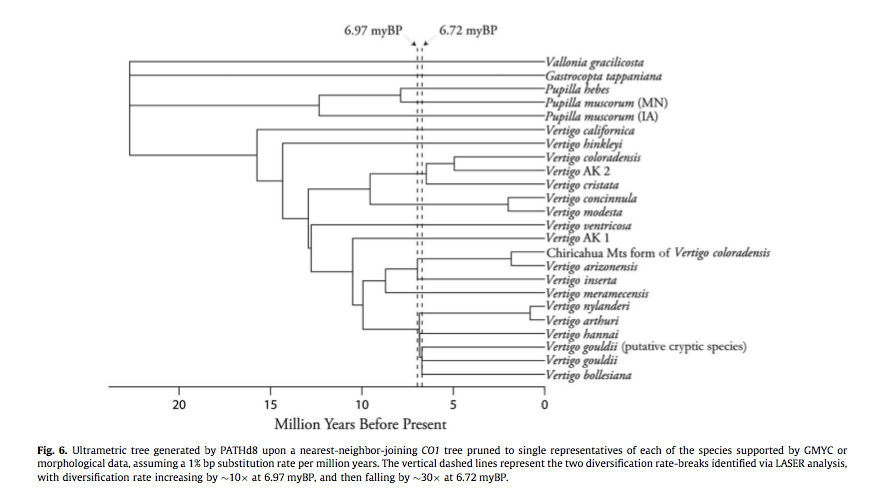Taxonomy
Members of the genus Vertigo demonstrate a high degree of aphallism and reduction in the male genitalia. Because of this both the species-level and supraspecific taxonomy has historically relied on the characteristics of the shell. This includes the overall shape of the shell itself and the aperture, as well as the surface sculpture and lamellar configuration (Nekola et al., 2009). Only two subgenera within the Vertigo have actually been given an official taxonomic status, the subgenera being Vertigo (Angustula) and Vertigo (Vertillaria) (Pilsbry, in Nekola et al., 2009). The remaining members of the genus Vertigo have been placed instead into informal taxonomic groups. This has been done since distinguishing between the species has been of particular difficulty (Nekola et al., 2009). The following images show how much the shells look alike within the genus.
Groups within the Vertigo group have been formed traditionally, and as previously mentioned, by the characteristics of their shell. Minute distinctions between the shells have classified the species into smaller groups. One of these groups is the Vertigo ovata group which presents with strong lamellae. Another group, Vertigo gouldii is the most diverse and contains about one-third of the taxa found in North America. It is distinguished by its intermediate lamellar strength, but very distinct shell striations. Finally the species we are interested in, Vertigo modesta, is found with in the Vertigo modesta group which is characterized by its weak lamellae (Nekola et al., 2009). After looking instead at DNA sequencing, it was found that the phylogenetic trees indicate that the genus Vertigo is a monophyletic clade, and the Vertigo modesta clade consists of Vertigo modesta, Vertigo concinnula, Vertigo cristata, and in part Vertigo gouldii coloradensis. Of these members Vertigo concinnula is actually, as seen on the tree below, the sister of Vertigo modesta (Nekola et al., 2009). This DNA study by Jeffery C. Nekola, Brian F. Coles, and Ulfar Bergthorsson, has given important insights into the phylogeny and evolution of the Vertigo gouldii and Vertigo modesta clades (Nekola et al., 2009).


